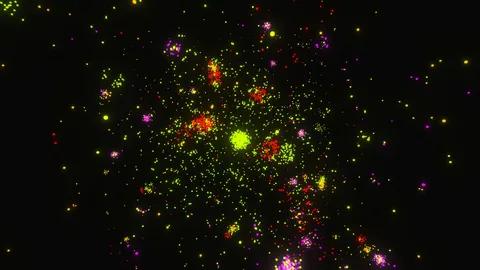Exploring Computer Artificial Life: The Intersection of Technology and Biology

Artificial life (ALife) refers to the study and simulation of life-like processes using computer models, robotics, and biochemical systems. This fascinating field merges computer science, biology, and philosophy, providing insights into the nature of life itself while also advancing technologies that mimic biological systems. This article explores the key concepts, applications, and implications of computer artificial life.
Understanding Artificial Life
Artificial life encompasses a range of approaches to understanding and recreating life. It can be categorized into three main areas:
-
Soft ALife: This area focuses on computer simulations that model biological processes. Researchers use algorithms to mimic behaviors of living organisms, allowing for the exploration of evolutionary principles, ecological interactions, and complex adaptive systems.
-
Hard ALife: This involves the creation of physical entities, such as robots, that exhibit lifelike behaviors. These robots are often designed to adapt to their environments, learn from experiences, and perform tasks autonomously.
-
Wet ALife: This aspect deals with the creation of life-like systems using biochemical processes. Researchers explore synthetic biology and biocomputing to develop systems that can replicate life’s processes at the molecular level.
Key Concepts in Artificial Life
-
Self-Organization: One of the central themes in artificial life is the concept of self-organization, where simple rules lead to complex behaviors. This principle is observed in both natural systems (like flocking birds) and simulated environments, enabling researchers to study emergent phenomena.
-
Evolutionary Algorithms: These algorithms mimic natural selection processes to solve complex problems. By evolving solutions over generations, they can find optimal or near-optimal solutions to challenges in engineering, optimization, and artificial intelligence.
-
Agent-Based Modeling: This approach involves creating autonomous agents that interact with one another and their environment. Researchers use agent-based models to simulate social behavior, economic systems, and ecological dynamics.
Applications of Artificial Life
The study of artificial life has numerous applications across various fields:
-
Robotics: ALife principles are increasingly used in robotics to create autonomous systems that can learn and adapt to their environments. Examples include drones that navigate complex terrains and robots that assist in search-and-rescue missions.
-
Biological Research: Simulations of artificial life provide insights into biological processes, allowing scientists to explore evolution, disease dynamics, and ecosystem interactions in a controlled environment.
-
Artificial Intelligence: Techniques derived from artificial life contribute to advancements in AI, particularly in areas like machine learning and neural networks. Understanding how life adapts and evolves can inform the development of more sophisticated AI systems.
-
Education: ALife simulations are used as educational tools to teach complex biological and ecological concepts. By engaging with interactive models, students can grasp the dynamics of life systems more intuitively.
Ethical and Philosophical Considerations
The study of artificial life raises profound ethical and philosophical questions. As we create systems that mimic life, we must consider the implications of these creations:
-
Consciousness and Identity: What does it mean to be "alive"? Can artificial systems possess consciousness, or are they merely advanced simulations? These questions challenge our understanding of identity and existence.
-
Responsibility and Control: As we develop more autonomous systems, we must consider our responsibility for their actions. Ensuring that these systems operate ethically and do not cause harm is paramount.
-
Impact on Society: The integration of ALife technologies into society can have far-reaching consequences. From healthcare to environmental management, understanding the implications of artificial life on human systems is crucial.
Conclusion
Computer artificial life represents a fascinating intersection of technology and biology, offering profound insights into the nature of life itself. As researchers continue to explore this field, the potential for innovation and discovery is vast. However, with these advancements come significant ethical and philosophical considerations that must be navigated thoughtfully. As we delve deeper into the mysteries of artificial life, the questions we ask will shape the future of both technology and our understanding of life.
- Arts
- Business
- Computers
- Spellen
- Health
- Home
- Kids and Teens
- Money
- News
- Recreation
- Reference
- Regional
- Science
- Shopping
- Society
- Sports
- Бизнес
- Деньги
- Дом
- Досуг
- Здоровье
- Игры
- Искусство
- Источники информации
- Компьютеры
- Наука
- Новости и СМИ
- Общество
- Покупки
- Спорт
- Страны и регионы
- World


